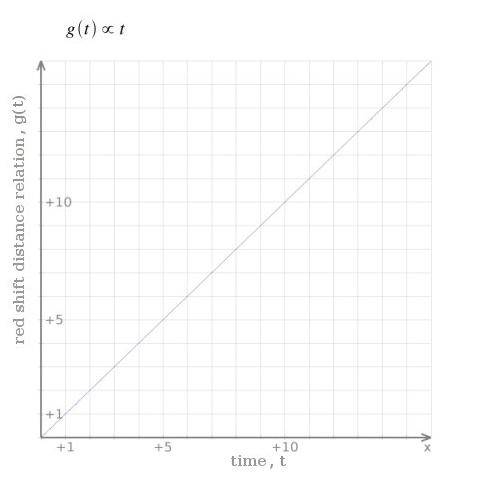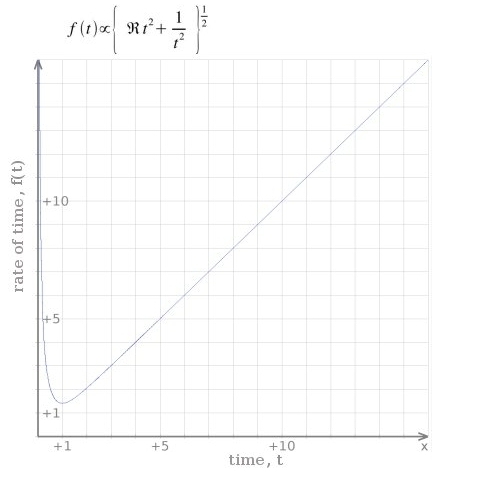“…each theory is evidently an abstraction from a totality that is inherently unlimited, both qualitatively and quantitatively. As such, it evidently cannot be entirely self-determined, because it always depends in various ways on what has been left out.”[1]
A Fun Mental Exercise:
It’s pretty unarguable that the basis for any mechanical human creation is our understanding of the physical sciences. In this knowledge base it has emerged that across the decades, certain fundamental constants emerged in our description of the behavior of this material with respect to motion, including heat and time. These fundamental constants, such as Plank’s, Newton’s Gravitational Constant, Einstein’s Speed of Light, etc. weren’t simultaneously conceived, but were so over time. So therefore one could reasonably expect more in the future, and not only because every consistent theory is incomplete, but particularly since it is a given that all knowledge—say, in the study of motion—is not revealed. It’s reasonable to expect that not all fundamental particles have been observed, at will, and in the laboratory. The fundamental particles of gravitation can evade our direct observation, and especially or control in the laboratory, for thousands more years.
In Standard Big-Bang Cosmology, Hubble’s Law plays an important role in measures of length across very large distances.
Apparently, there is a Universe out there that is physical space. According to Einstein, all the information we receive from it is from the past, and the further along we look, and the deeper and deeper we see, and the greater and greater is the magnification of the lens, or other measuring apparatus, the longer ago this information was sent. Doppler Shift measurements of light from deep space indicate a correspondence between the magnification of the lens and the Doppler Shift of the specks of light that gives every indication they are very, very large structures, very far away.
In Standard Big Bang Cosmology, these large structures, can be extrapolated backwards to have existed in a time when the Doppler Shift measurements and our ability to detect light appears to vanish. Increased magnification continues to help; theoretically, there will always be a period of time between the “moment of creation,” and our ability to measure light.
That shouldn’t bother us; what annoys in this cosmology, is the postulate there exists a moment of creation. As a result, we are obliged to speculate on the nature of the spatial origin and a time beforehand: that Unique Singularity, and that incomprehensible time prior.
This is unacceptable to rational thinking. Making a statement on the ultimate properties of matter, that it had been created at one moment and forced to exist the next, that it continues to exist and manipulate the behavior of other moving bodies according to certain laws, will be certain to influence, and be the influence of, the character and the rendering of these laws—because a necessary reciprocity should exist between the theory of the origin of matter with it’s behavior. One cosmology may state that matter had been created in a single moment, while another may hypothesize that matter had always existed in some state over a time-space that is infinite. I like to imagine an infinite time-space as a theoretical basis, more so than a finite one—as the topology is a simpler, more continuous one and precludes all the persistent questions of creation.
It seems impossible, however, to accommodate mechanics with the concept of infinity. Is this a dilemma?
At first impression, the concept of infinite spaces and times are difficult to accept, much less comprehend; they appear to invoke irrational expectations of the physical realm. However, in one real solution presented here, the longer time ago one makes a measurement of scale, the closer are adjacent objects, which it turn correspond to a slower speeds of their communication relative to the speed of communication here on Earth. Specifically, this correlation function is not linearly related to the present day, but quadratically. So, that as one increases the magnification, the farther one may observe, but also the longer is the time scale between their adjacent spatial intervals.
I read that Standard Cosmology does not like quadratic functions describing the relationship between distance and time (for various reasons), mainly because Hubble’s Law, which dominates standard cosmological observation, is a linear relationship: that is, looking through telescopes strongly suggests this.
Is there a quadratic function that could look linear across vast distance and time scales?
If so, what topology of space and time would look linear to an observer on Earth, not conflict with Hubble’s Law, that is, appear to extrapolate to a finite time in a closed space, with an apparent origin of some spatial singularity, but be descriptive of an actual infinite time scale without origin?
ANSWER: Closed Space; Open TIme:
Measurements of distance, made across vast time scales, may be the result of a composition of functions, such as those above. The slope to the right, pictured above as unity (for visual effect), can be made arbitrarily flat, indistinguishable from y=1, as ℜ⇒0 (see image below).

H(t)=f(t) o g(t)
The function f(t) is the Pythagorean sum of two vectors whose cross product is always equal to R, independent of time, t.
This can be visually represented as a flattened parabolic shape with a “hole” through the center, along the longitudinal axis of symmetry. It is of the form:
(1) ![]()
This parabolic shape is translated with an x in first order. It is of the form:
(2) ![]()
“What doesn’t have a hole in it,” my neighbor would ask.
Above is an image of what f(t) may look like.
If R is very small relative to numbers for t, then the rate of time is nearly constant for numbers of t. In effect, this would describe a circumstance where any change in the rate of time, if it were to be measured in the present day, would be close to zero and consistent with standard laws of mechanics. If R is close to unity, however, a condition would be described where a change in the rate of time, if it could be measured, would not be as close to zero. In either case, as t approaches zero, one Earth Year of time in the present day would become equivalent in scale to innumerable Earth Years, potentially hundreds of trillions of years, of the “early” Universe. Of course, the word “early” loses it’s meaning here, where the distances of separation between adjacent particles are relatively close to zero, their speed of communication is relatively close to infinity, and which appears as faint as it does stationary from telescopes here near Earth.
[1] D.Bohm and B.J.Hiley, The Undivided Universe: An Ontological Interpretation of Quantumn Theory, Routledge, London, 1993


